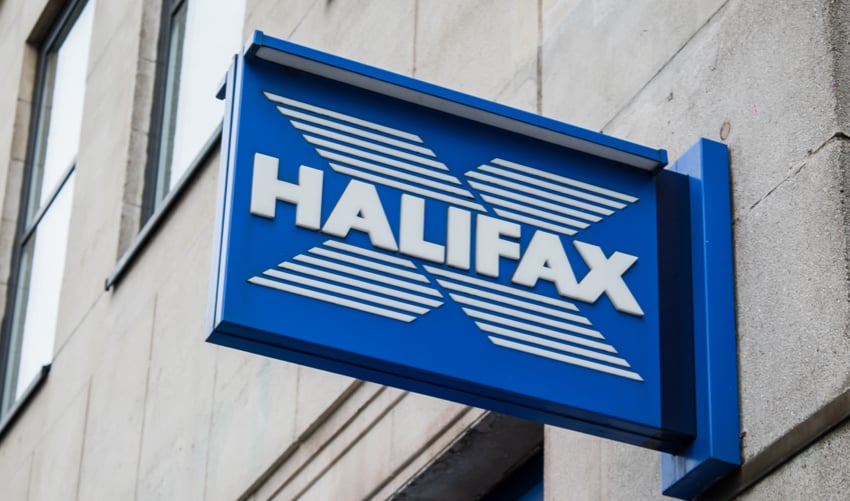Interest rates on bridging loans typically start at 1-2% per annum. At the top end of the scale, interest rates can be up to 25-30% per year. The interest rate will depend on the security on offer, your profile as a borrower and the exit (how and when you plan to pay the loan back).
Some bridging finance providers will present a monthly rate (i.e., 1% per month). Other providers offer an annual interest rate (i.e., 12% per annum). For simplicity's sake, we will use the annual interest rate in this article.
What Does Bridging Finance Cost?
It's important to know that the actual cost of a bridging loan is more than just the annual or monthly interest rate. What constitutes a cheap bridging loan? When calculating the total cost of your bridging loan, you will need to consider additional fees and charges. It is the sum of these expenses that will establish the complete cost of your bridging loan. Bridging loan costs will include:
- Interest rate: the monthly or annual interest cost
- Arrangement fee: the upfront arrangement fee (either a fixed amount or a percentage of the loan)
- Exit fee: a fee payable at the end of the loan (either a fixed amount or a percentage of the loan amount)
- Early repayment fee: a charge that will be made if you redeem the loan early or within a defined period
- Other costs: legal costs (yours and the lenders), valuation costs, admin fees, broker fees and other supplementary charges
- Interest calculation type: whether the loan is a daily/monthly or annual interest rate
- Compound effect: if you are not paying the interest monthly, consider the mechanism for how interest is allocated (interest can either be paid upfront, rolled up monthly or paid at the time of redemptions). You will want good advice here and to plan carefully: this can affect the total cost of the loan significantly
Enness work at every level of the bridging loan marketplace, in the UK and internationally. We are uniquely positioned to see and understand the entire bridging market. We see hundreds of enquiries a year, and given we work exclusively on behalf of you as the borrower, we are very aware of all costs, charges and any pitfalls you should consider.
Here are some of the key sectors together with expected bridging finance rates:
Get in the Know
Subscribe to our newsletter
Bridging Loan Interest Rate - Private Banks
Private banks generally offer very competitive bridging finance rates, and they are often the most affordable lender for bridging loans. That said, private banks often want to know you as a borrower (i.e., you are already a client of the bank or you have a high profile). Alternatively, a private bank may well want you to be a potential client of the institution in the future.
Private banks can respond very quickly to bridging loan requests, and given the nature of the business, they can make decisions fast and in a creative way to help solve their clients' problems.
Private bank bridging finance will often be used for straight forward timing issues, i.e., breaking property chains or allowing for a fast completion in response to an opportunity. It's unlikely a private bank will want to lend in situations with more technical, challenging or speculative loans.
You should also expect a reasonably thorough underwriting process focused on your position, your ability to repay the loan and the security on offer. On this basis, you can expect private banks to offer bridging loans from as little as 3% per annum. Private banks often have much lower set up fees than a traditional bridging lender.

High Street Lender Bridging Loan Interest Rate
It is doubtful that any of the UK's leading mortgage lenders (i.e., NatWest or Halifax) will offer you a bridging loan via their retail operations. Because these banks are set up for high volume low-risk lending, they rely on automated or streamlined processes that make the individual analysis needed for a bridging loan practically impossible.
High street lenders in the UK do sometimes have specialist departments that offer bridging loans. Often, it's the lender's private bank offering or commercial arm that offer bridging loans, for example. If you choose to approach one of these lenders for bridging finance, you can expect a comprehensive underwriting process and a relatively low appetite for risk or highly complicated scenarios. On the flip side, you are also likely to enjoy prime interest rates, which will likely start at around 3% per annum.
Building Society and Challenger Bank Interest Rates on Bridging Loans
Several building societies and challenger banks have entered the bridging finance market in recent years, usually by extending their manual and bespoke underwriting processes. Such lenders were attracted by the outside interest rates they can charge by offering bridging finance.
Private banks centre on the relationship with the borrower, whereas building societies, challenger banks and private specialist lenders will focus much more on the security and the borrower.
Challenger banks and building societies will pay most attention to the property being used as security, how you will make interest payments, how you will pay the loan back and your exit. Challenger banks and building societies usually lend in closed bridging type scenarios or where there is a clearly defined reason for using a bridging loan. A typical example would be in a case where you are using bridging finance to buy a new property before you have sold your old one. Again, it is unlikely that building societies or challenger banks will entertain anything particularly complicated from a property perspective. Still, they will be more creative from an income and serviceability angle.
Building societies and challenger banks will offer bridging loans in the 5-7% per annum range. Fees and charges are also likely to be more modest than other lenders, which you may also want to factor in. They are also likely to offer bridging finance for the longer term, 1-3 years, for example. Building societies and challenger banks who offer bridging finance have extensive underwriting processes, and they typically don't move as fast as other lenders.

Regulated Interest Rates on Bridging Loans
There is little difference in the price of regulated bridging loans compared to unregulated bridging finance. Given that regulated bridging loans are more complex, you will mainly see these loans offered by private banks and building societies. A small but growing number of specialist bridging finance providers also offer regulated bridging loans.
Regulated bridging finance can cost anywhere from 3% per annum up to 12% per annum. Your actual rate will be determined by the loan-to-value ratio, the broader circumstances of the transaction, the property on offer, your status as a borrower and the exit you would like.
Non-Bank and Alternative Finance Bridging Rates
Today, the vast majority of bridging finance is offered by non-bank lenders. Bridging finance lenders come in many shapes and sizes: they range from substantial peer-to-peer lending platforms to small companies who focus on certain parts of the market. We also know of high-net-worth individuals who lend their own capital.
There has been a significant period of growth in this part of the market, and there are increasing numbers of lenders. The influx of lenders has been fuelled by the returns on offer to the investors, relatively low competition in the marketplace and institutional money finding its way into this part of the market.
The interest rates offered by these lenders will be a result of the elements of the deal (i.e., security, what you want to borrow, how you plan to exit, etc.) plus the funding structure of the lender.
Where Does Bridging Finance Capital Come From and How Does it Affect You?
So far, so logical. But are there any pitfalls you need to look out for? Let's break it down further.
All of the bridging finance providers in this part of the market are funded by either:
- their own capital
- bank credit lines
- a fund or collective investment scheme
- peer-to-peer investors
- warehouse facilities
- A high-net-worth individual or family office
The bridging lender uses the money available to them from one of these sources to make a loan. The bridging loan provider offers a borrower money and adds a margin on top for themselves. As a result, bridging finance costs can vary significantly: every lender can set their rate.
Practically, the rate you are offered is likely to be influenced significantly by how much competition there is from competing bridging finance providers and the complexity of your transaction. A straightforward bridging loan with several lenders interested or which is brokered by a specialist will have a low interest rate. A complex bridging loan, one that you didn’t receive advice on, or which isn't brokered, is likely to be more expensive: the lender you approach will name their price, and you will either have to take it or leave it.
There are hundreds of lenders in the bridging finance space. Lenders are competing for business, are fighting for market share, and each wants to be the 'go-to' in their niche. Because the industry is completely unregulated, the cost of bridging finance can vary hugely. Competing lenders may even give very different rates for the same deal. Add in plenty of fees, charges and costs into the mix and finding the best possible price is a real skill. You'll want to make sure you get the best deal available: annual interest rates of even one or two per cent can represent a significant difference in what you will pay. We excel in helping you get the best bridging finance deal.
Commercial Interest Rates on Bridging Loans
Commercial bridging finance relates to cases when a commercial asset is used as security. Hotels, warehouses, land, catteries, churches and offices all count as commercial properties...as does anything else in between.
Commercial assets are more complex than a house or a flat and that their value is typically determined by the income the building produces (or can create). Commercial finance is generally more complicated than residential bridging finance, and as a result, there are fewer lenders in this space. Interest rates are usually higher than for residential properties, but, as ever, your rate will depend on the deal. For example:
The More Liquid the Asset, The Lower The Rates
For example, in February 2021, warehouses were lower-risk assets than restaurants, and they would therefore command a lower interest rate
The Status of The Borrower
A high-net-worth executive with a balanced asset base will command a lower rate than a first-time investor
The Exit Strategy
A speculative buy with an aggressive plan will be less expensive to finance than a simple, quick purchase before refinancing to an already agreed finance package
Commercial bridging finance rates are genuinely bespoke and will run from 4% per annum up to 25% or more for a restaurant lease.
Property Development Bridging Finance Rates
Property development used to be financed by the main clearing banks and a few specialist merchant banks and international banks. As the risk profile of these lenders has fallen significantly in recent years, the door has been left open for bridging finance and alternative finance providers to fill the void.
Bridging finance is now a vital tool for property developers. Again, rates are influenced by several different elements, which include:
- The experience of the borrower
- The professional team
- The property development plan
- The cost of acquisition
- The build costs
- The gross development value
- The saleability and/or market for the finished product
As well as the profile of the deal, other factors will also impact property development bridging finance rates. How much you want to borrow (as a percentage of the purchase price), how much of the development costs are needed and what percentage is compared to total costs (the loan-to-cost ratio, or LTC) and end value (loan to gross development value, or GDV) will also factor in the rate you are offered.
In general, if the LTC, loan to GDV, purchase price and % of costs needed are low, you will likely be looking at rates somewhere around the 5-8% per annum mark. A high loan to value, even 100% loan to cost solution, will range from 10-15% per annum.
Property development bridging loans are highly fiscal transactions. Your lender's interest rate tolerance will be based on the scheme's profitability and the opportunity the development represents.
Competition is fierce in the property bridging finance sector, and some incredible speciality finance providers are operating in the space. Getting personalised advice here is vital, especially if you are new to property development. Even if you have been using the same provider for years, it's occasionally worth having a regular search of the market to make sure you have the best finance package.
Luxury Asset Bridging Finance
You can use bridging finance to create liquidity or acquire luxury assets quickly, for example:
- Boats and yachts
- Cars
- Aircraft
- Art
- Jewellery and watches
- Crypto and alternative assets
- Wine
- Horses and other unusual items of value
Luxury asset bridging finance isn't inexpensive, and very few lenders operate in this very niche part of the market. You will want to work with reputed lenders and have an independent partner on your side to support you to find the best deal and advise you on who to work with. Some lenders in the luxury asset space have a 'pawnbroking' approach to luxury asset lending. As a result, you need to ensure your interests are protected and you are getting the best deal from a well-respected and bona fide lender.
At the centre of luxury asset bridging finance, the asset is the most important factor. The way the asset is valued and how quickly it can be sold if you cannot repay the loan will be central considerations for your lender.
Be warned: luxury asset bridging finance is not for the fainthearted. You should only ever use bridging asset finance for the most urgent and short-term financing requirements. We also suggest you may want to explore all other avenues before considering luxury asset bridging finance.
You can expect rates in the 10-30% per annum range for most of the items above. For smaller value transactions, the cost may be higher.
International Bridging Finance Rates
Bridging finance remains a distinctly British product. Bridging finance started in the UK around 20 or 30 years ago. At the time, a few small lenders, often backed by a family office or wealthy individual, lent money to people who needed to buy property quickly. Bridging finance emerged more actively after the financial crisis as borrowing became very difficult. From then on, bridging finance has been utilised by lenders due to regulation, the liquidity of the UK property market, and investors searching for yield.
That said, bridging finance is beginning to become a feature of other HNW property markets. You will find some bridging finance providers in France, Spain, Switzerland, Hong Kong and some American cities, for example. Lenders are much less prevalent than they are in the UK, and funding lines are less available.
Bridging finance is slightly more common in continental European countries with strong housing markets; Paris and the south of France are prime examples. Even in these scenarios, bridging finance is limited to lower loan-to-value ratios, higher-value transactions and borrowers with a clear and provable exit.
In other countries like Italy and Greece, bridging finance is all but unavailable given local laws, repossession rules, and the property market's liquidity.
There are, however, providers – but interest rates are highly changeable and entirely negotiable. International bridging finance rates start from 7% per annum.





